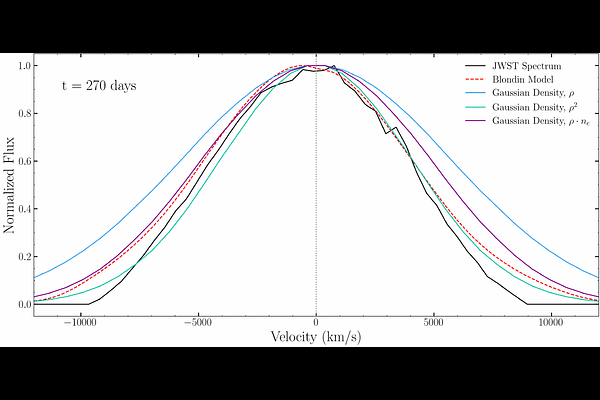Wakes from Companion Interactions in Type Ia Supernovae Nebular Emission Line Profiles

Wakes from Companion Interactions in Type Ia Supernovae Nebular Emission Line Profiles
Kathlynn Simotas, Lars Bildsten, Logan J. Prust
AbstractThermonuclear supernovae (SNe) are the result of the nuclear transformation of carbon/oxygen (C/O) white dwarfs (WDs) to the radioactive element $^{56}\mathrm{Ni}$ and intermediate mass elements (IMEs) like Ca, Ar, etc. Most progenitor scenarios involve a companion star which donates matter to the exploding white dwarf, implying a fundamental prediction: the formation of a wake in the explosive ejecta as it runs into and moves past the companion star. This wake leaves an indelible imprint on the ejecta's density, velocity, and composition structure that remains fixed as the ejecta reaches homologous expansion. We simulate the interaction of the ejecta and Roche-lobe filling donor in a double degenerate double detonation Type Ia progenitor scenario and explore the detectability of this imprint in late-time nebular phase spectroscopy of Type Ia SNe under the assumption of local heating ($t > 200$ days). At these times, the velocity profiles of forbidden emission lines reflect the velocity distribution of all of the ejecta and the critical electron density for that forbidden line. We explicitly calculate line shapes for the [Co III] $11.89 \mu\mathrm{m}$ line that traces the initial $^{56}\mathrm{Ni}$ distribution and the [Ar III] $8.99 \mu\mathrm{m}$ line, which traces a typical intermediate mass element. We predict the viewing angle dependence of the line shape, present a tool to quickly calculate optically thin line shapes for various 3D density-velocity profiles and discuss JWST observations.